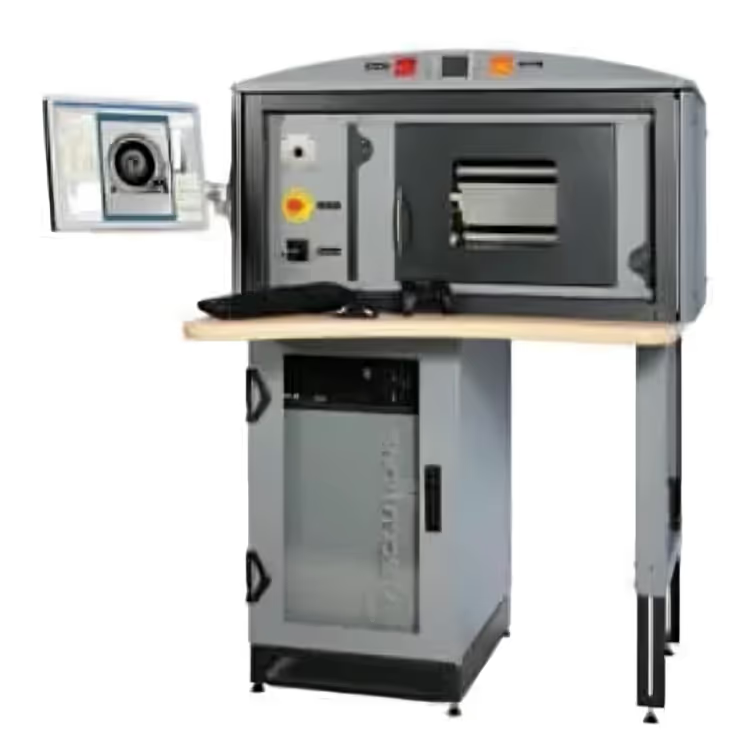3D CT Scanners from RX Solutions

UNLOCK A NEW LEVEL OF DETAIL WITH EACH SCAN
CAD/CAM Services is a registered reseller of two different 3D CT scanners from RX Solutions, the DeskTom and EasyTom.
If you weren’t aware, industrial CT scanners work just like medical CT scanners: there is an X-ray source that shines into an X-ray detector, with an object placed in between. What can this object be? Anything you want to get an X-ray of.
Our customers will use their 3D CT scanner to take scans of aerospace components, electrical assemblies, automotive parts, and countless other mechanical objects.
The DeskTom and EasyTom both feature automated platforms, which will index the part and rotate it slightly after taking a scan. After taking X-rays from enough angles, the companion software will automatically compile all of the scans into a single, usable 3D CAD file with internal structures that you can see through a section or cut view.
We highly recommend an industrial 3D CT scanner for any engineering team that needs to handle inspection, R&D work, or any degree of reverse engineering. While the machine can be a bit expensive, it should fit within your engineering department’s budget, and it saves you a lot of time and money with each scan. To manually reverse engineer or inspect a part could take hours, and this system can do all the work in a fraction of the time.
While there are other industrial CT scanners on the market, we stand behind the offerings from RX Solutions. The EasyTom and DeskTom both strike a perfect balance of affordability, precision, and ease of use.
More About This Technology
Industrial Computed Tomography (CT) scanning works by taking a collection of non-destructive X-rays of an object. The machine has an X-ray source that fires through a loaded part, into an X-ray receiver. The source sends waves to the receiver, and the receiver will get varying amplitudes and frequencies of the waves.
It uses the difference between what waves were sent and what waves were received to understand what the inside of your part looks like. It’s similar to shining a flashlight on a part and looking at the shadow cast behind it, but a lot more technical and intricate.
Each scan gives a picture of the depth of your part in 2 dimensions. In fact, industrial CT scanners work just like medical CT scanners, but they work on a wider range of materials and objects.
From there, the CT scanner will move the part around and continually take X-rays of it, capturing a full 360° image of your part and accompanying depth data. This data goes to a secondary processor, usually a piece of software, that puts together all of the data, all of the pictures, and creates a 3D CAD file.
The CAD file will come with details about the internals of your part or assembly, as well. Within your CAD program, you can look at section views to see accurate representations inside your part. CT scanners provide interior views that you can’t get with any other technology.



